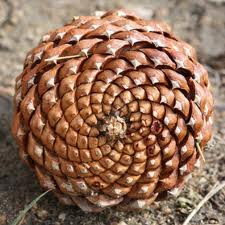

Fibonnaci Sequence
Allyson Faircloth
For this investigation, we will be using Excel to examine a Fibonnaci Sequence. Here is a link to the Excel file.
History:
A Fibonnaci sequence is a sequence given by the following recursive rule:
This means that any term in the sequence is the sum of the two previous terms.
For this investigation we will be using the sequence where our first and second terms are both 1.
The Excel sheet below is the first sheet in the file. It shows in column A the Fibonnaci sequence. column C is the ratio of adjacent terms, column D is the ratio of every second term, column E is the ratio of every third term, etc.
We notice from column C that the ratio of adjacent terms gets closer and closer to 1.618 until it finally levels out at the 18th term and stays at the ratio as n continues to increase.
From column D, the ratio of every second term is getting closer and closer to 2.618 until it levels out at that ratio at the 19th term. This is our ratio for
Column E then shows us that for every third term we see almost the same pattern. The ratio reaches 4.236 at the 21st term and stays at that ratio as n continues to increase.
This same sort of patterns occurs with column F and column G for their ratios of 6.854 and 11.09. Is there pattern for the ratios?
Interestingly enough there is a pattern. We can see that the ratio of column D (2.618) is one more than the ratio of column C (1.618). Then, we can get the ratio of column E (4.236) by multiplying the ratio of column C (1.618) by two and then adding one. We can get the ratio for column F (6.854) by multiplying the ratio of column C (1.618) by three and then adding two. Lastly, the ratio for column G (11.09) is found by multiplying the ratio of column C (1.618) by five and then adding three.
What does all that mean? Well, let's look at the above information in a little bit easier way.
1.618 =(1.618 x 1) + 0
2.618 = (1.618 x 1) + 1
4.236 = (1.618 x 2) + 1
6.854 = (1.618 x 3) + 2
11.09 = (1.618 x 5) + 3
Therefore, the number that we multiply to 1.618 is found using the sum of the two previous numbers that were multiplied and the number we add to that is the sum of the two previous numbers which were added. For example, to get 11.09 we multiply 1.618 by 5 because for the last two ratios we multiplied by 2 and 3 and the sum is 5. Then we add three since for the last two ratios we added 1 and 2 and there some is 3. The ratios had Fibonnaci sequences within their foundation.
Now let's look at another Fibonnaci sequence on sheet two of our file. For this sequence our first term is one and our second term is three.
We have gotten the same ratios that we found with the first sequence. For example, the ratio of adjacent terms levels out at 1.618 just as before. We can conclude that every Fibonnaci sequence will indeed have these same ratios.
Lastly, it is important to point out that the ratio of adjacent terms or 1.618 is very close the the golden ratio of 1.618034. The golden ratio is a spiral which can be found in nature such as with flowers, at the ends of pine cones, or in the shapes of some sea shells.


Return